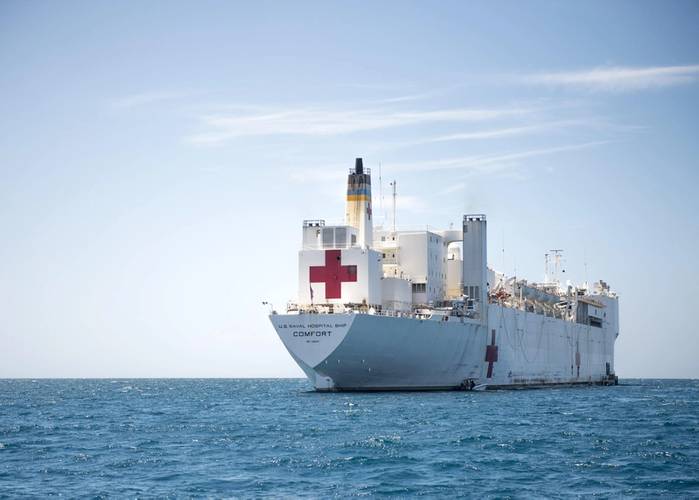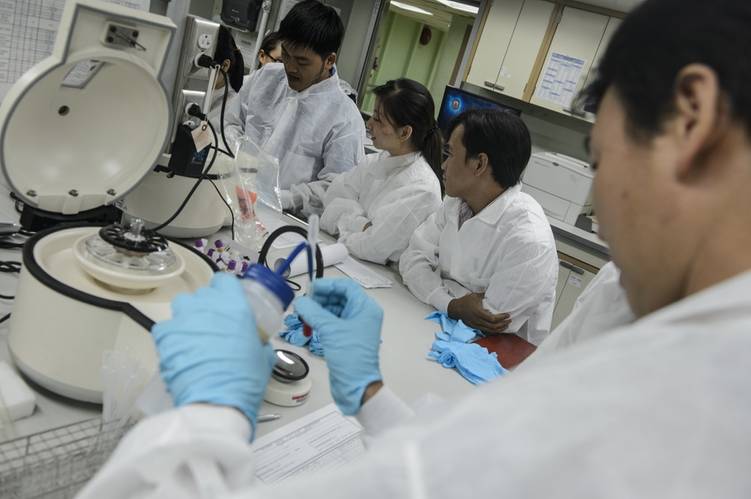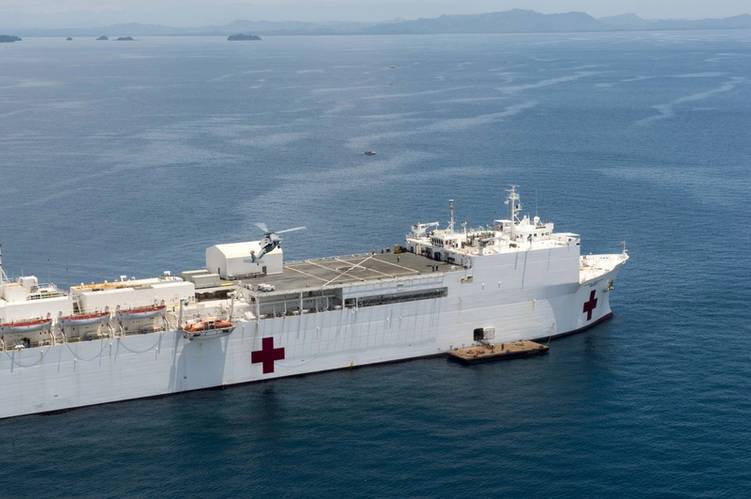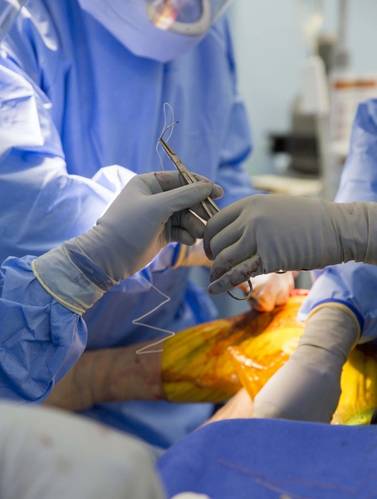For providers deployed aboard a hospital ships, making sure all the right equipment is on board is vital. The Naval Health Research Center (NHRC) completed a year-long project to optimize and standardize combat support Authorized Medical Allowance Lists, April 5.
"The goal of this project was to develop standard AMALs for both hospital ships [USS Mercy and USS Comfort]" said Capt. Rita Simmons, NHRC's commanding officer. "If you're an orthopedic surgeon performing a procedure, you should have access to the same equipment and supplies whether you're on Mercy or Comfort. Ultimately, this will result in better care for our wounded and ill patients by ensuring our providers have the tools they need to saves lives and optimize health."
During the past year, staff from NHRC's modeling, simulation, and mission support department individually analyzed the content of each hospital ship's current AMALs. NHRC staff then consulted with subject matter experts-physicians, nurses, and corpsmen-to better understand their supply and equipment needs.
"Feedback from the medical experts, the boots on the ground, was instrumental in determining requirements for each AMAL," said Michael Galarneau, director for operational readiness at NHRC. "Each AMAL has to have the right equipment, supplies, and consumables to support specific medical and dental procedures anticipated in support of combat operations. We needed to hear from the people providing direct patient care what equipment is essential in support of their mission."
When it comes to subject matter experts, NHRC has been analyzing and estimating medical supply requirements for military units since the mid-1990s. Using a science-based systematic method created at NHRC, the medical modeling and simulation team has already updated and standardized the AMALs used aboard all Navy aircraft carriers, amphibious assault ships, submarines, destroyers, and even several Air Force medical assemblies.
Ultimately, NHRC made standardized recommendations for just over 60 hospital ship AMALs. The technical report provided to the MSC and Naval Medical Logistics Command, the organization responsible for managing and updating AMALs across the fleet, details requirements for each AMAL. The updated recommendations for the equipment AMALs are based on the T-AH 1,000-bed capability and each consumable AMAL will supply 30 days of operations for a 250-bed configuration.
"Having worked in land-based military treatment facilities, there are a lot of different instruments and skill sets, and providers have their favorites, particularly surgeons," said Capt. Melanie Merrick, commanding officer of the medical treatment facility USNS Mercy. "We've been wanting to standardize across Navy Medicine, but for a deployed unit, it's necessary from a budgeting standpoint as well as familiarity of the supplies when they're using them."
Now that NHRC has completed recommendations for the combat support AMALs, the next project will be standardizing the AMALs that support humanitarian assistance and disaster relief missions.
During both hospital ships' recent HA deployments, Mercy's Pacific Partnership and Comfort's Continuing Promise, the medical modeling and simulation team worked with personnel aboard each ship to collect patient encounter data. To develop accurate recommendations, NHRC needed information about patient volume and demographics as well as the type of illnesses and injuries treated by the ships' medical staff.
"Patient populations for humanitarian assistance and disaster relief missions are very different from what we see for combat support," said Galarneau. "Our military are typically young and healthy adults being treated for injuries sustained during combat. The patients treated by Comfort and Mercy in support of disasters or humanitarian assistance missions include pediatric, adolescent, and geriatric patients, and a much higher percentage of females. These patients will be in need of preventive care and treatment for endemic diseases as well as potential injuries."
To capture accurate patient encounter information, NHRC deployed data pens and personnel aboard Mercy during their recent deployment. Using the pens, providers simply wrote patient histories, examination notes, and treatment recommendations as they normally would on specialized paper. After patient care was complete, data from the pens were uploaded into a database.
"I enjoy having people come aboard and ride along with us because there's no substitute for being on board and visualizing and touching things, but also seeing the daily movement of the ship, getting to know the routine and interacting with the crew," said Merrick.
After Mercy returned from deployment, NHRC's medical modeling team started extracting and using those data to sort and analyze the information and develop science-based recommendations for the types of equipment and supplies that will be needed to support these patient populations in future missions.
As the DoD's premier deployment health research center, NHRC's cutting-edge research and development is used to optimize the operational health and readiness of the nation's armed forces. In proximity to more than 95,000 active duty service members, world-class universities, and industry partners, NHRC sets the standard in joint ventures, innovation, and translational research.























